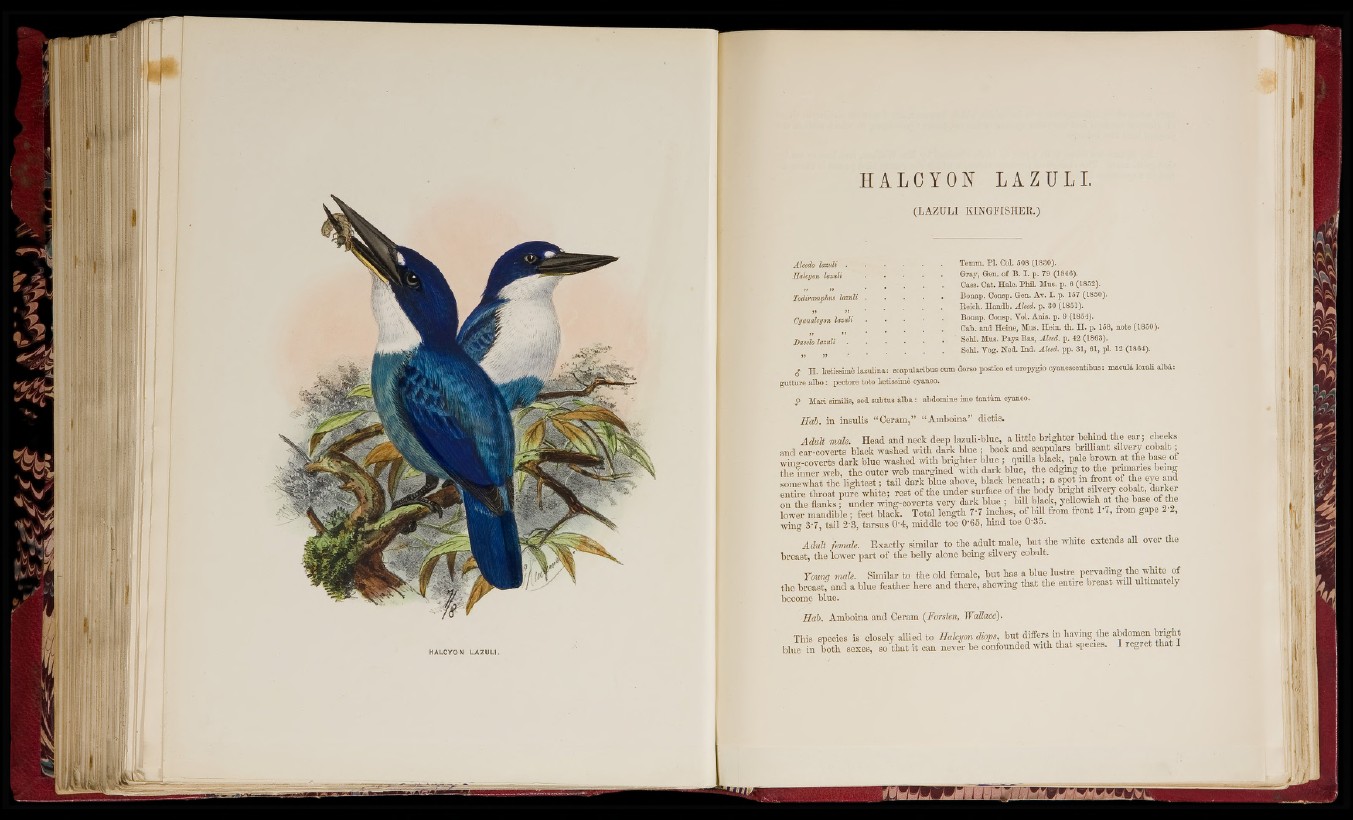
Temm. Pl. Col. 508 (1830).
Gray, Gen. of B. I. p. 79 (1846).
Cass. Cat. Hale. Phil. Mus. p. 6 (1852).
Bonap. Consp. Gen. Av. I. p. 157 (1850).
Eeich. Handb. Alccd. p. 30 (1851).
Bonap. Consp. Vol. Anis. p. 9 (1854).
Cab. and Heine, Mus. Hoin. th. II. p. 158, note (1850).
Schl. Mus. Pays Bas, Alced. p. 42 (1863).
Schl. Vog. Ned. Ind. Alced. pp. 31, 61, pl. 12 (1864).
uropygio cyanescentibus : maculà lorali all
Alcedo lazuli .
Halcyon lazuli
Todiramphus laz
Cyanalcyon lazu
Dacelo lazuli .
^ H. lætissimè lazulina; scapularibus cum
gutture albo : pectore toto ketissiiue cyaneo.
p Mari similis, sed subtus alba : abdomine imo tantùm cyaneo.
Ilah. in insulis “ Ceram,” “ Amboina” dictis.
A d u lt male. Head and neck deep lazuH-blue, a little b rig h te r behind the ear i cheeks
and ear-coverts black washed w ith d ark blue ; hack and scapulars h rd lian t silvery cobalt ;
winv-coverts d a rk blue washed with b rig h te r blue ; quills black,^ pale brown a t the base ot
the inner web, tbe o u ter web margined with d a rk blue, th e edgmg to the primaries being
somewhat the lig h t e s t ; ta il dark bine above, black b e n e a th ; a spot in fro n t ol the ejm and
•o “ • 1 >
A dult female. E x a c tly similar to the ad u lt male, b u t the white extends all over the
b reast, th e lower p a rt o f tbe belly alone being silvery cobalt.
T o um male. Sunilar to th e old female, b u t bas a bine lustre pervading the white of
th e breast; and a blue feather h ere and there, shewing th a t the entire breast will ultimately
become blue.
Hah. Amboina and Ceram {Forsten, Wallace).
This species is closely allied to B a l e y e n diops, » Z s A®
blue in b o tb sexes, so tb a t it can never be confounded Avitb tb at species. I re^^ret tb a t I
. 1
il ^